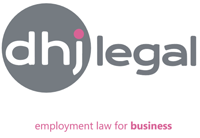
Discrimination and harassment. Are you aware of the stats?
- 80% of employees around the world have observed or experienced discrimination
- 62% of women who work in male-dominated industries reported that sexual harassment is a problem in their industry, compared to 46% of women working in female-dominated industries.
- 69% increase in sex discrimination claims from last year, and
The statistics are concerning. What adds to the concern is that the next generation of workers (u25s) are twice as likely to hold their employers accountable.
It really is time to take action in respect of diversity and inclusion at work.
The economic case for diversity and inclusion
There is a compelling economic case for diversity and inclusion (recruiting from a larger talent pool, improved retention, marketing and creativity advantages etc), but this post is not aimed at that case. It is however worth recognising that tackling something that may not have become a problem for a business will have other benefits.
The need for protection
This post is aimed at the significantly high risk of harassment in the manufacturing work place and the costly and damaging claims that may follow. Employers have to do what they can to avoid the following:
- brand/reputational damage
- personal liability for its employees
- wasted management time
- poor employee engagement
- retention issues
- low productivity
- financial impact (uncapped damages)
- negative Glassdoor reviews
The statistics are clear and concerning and should not be ignored, because there is something that employers can do to protect themselves.
Protection
Employers should ensure that they have in place a good equal opportunities policy. The policy should:
- provide a positive message to employees and others that the employer values equality and diversity and takes a proactive stance against discrimination.
- discourages discriminatory attitudes and behaviours, and make job applicants and employees feel confident about equality of opportunity.
- set the minimum standards expected by an employer in avoiding and preventing discrimination.
- be implemented with proper training and publicity, and appropriate action needs to be taken in the event of breach.
If employers have the right kind of policy and implement it correctly then they have a far better chance of successfully defending harassment claims.
Possible new laws
Taking the steps, described above, may well become a legal requirement before too long. The Government is presently consulting on sexual harassment in the workplace, which will run until 2 October 2019. The recommendations of the consultation paper include a duty on employers to take proactive steps to avoid harassment. The rationale for such a duty is that it would shift employer liability from after an incident of harassment, to a proactive duty before unlawful conduct has taken place. If this becomes law it really will not matter whether employer’s are concerned about the risk of harassment; they will be obliged to take proactive steps.
The UK is lagging behind many countries in this area of the law and it is likely that change legal change is just around the corner. In the U.S. organisations with 50 or more employees (including temporary and contractual employees) are required to:
- Provide at least two hours of harassment training every two years to all employees with supervisory responsibilities
- Train newly hired or promoted supervisors within six months and every two years thereafter
- Maintain records of training completion.
If you would like a free review of your policy on equal opportunities, harassment, diversity and/or inclusion then email Dan Jones (dan.jones@dhjlegal.com or call 02920020402)
